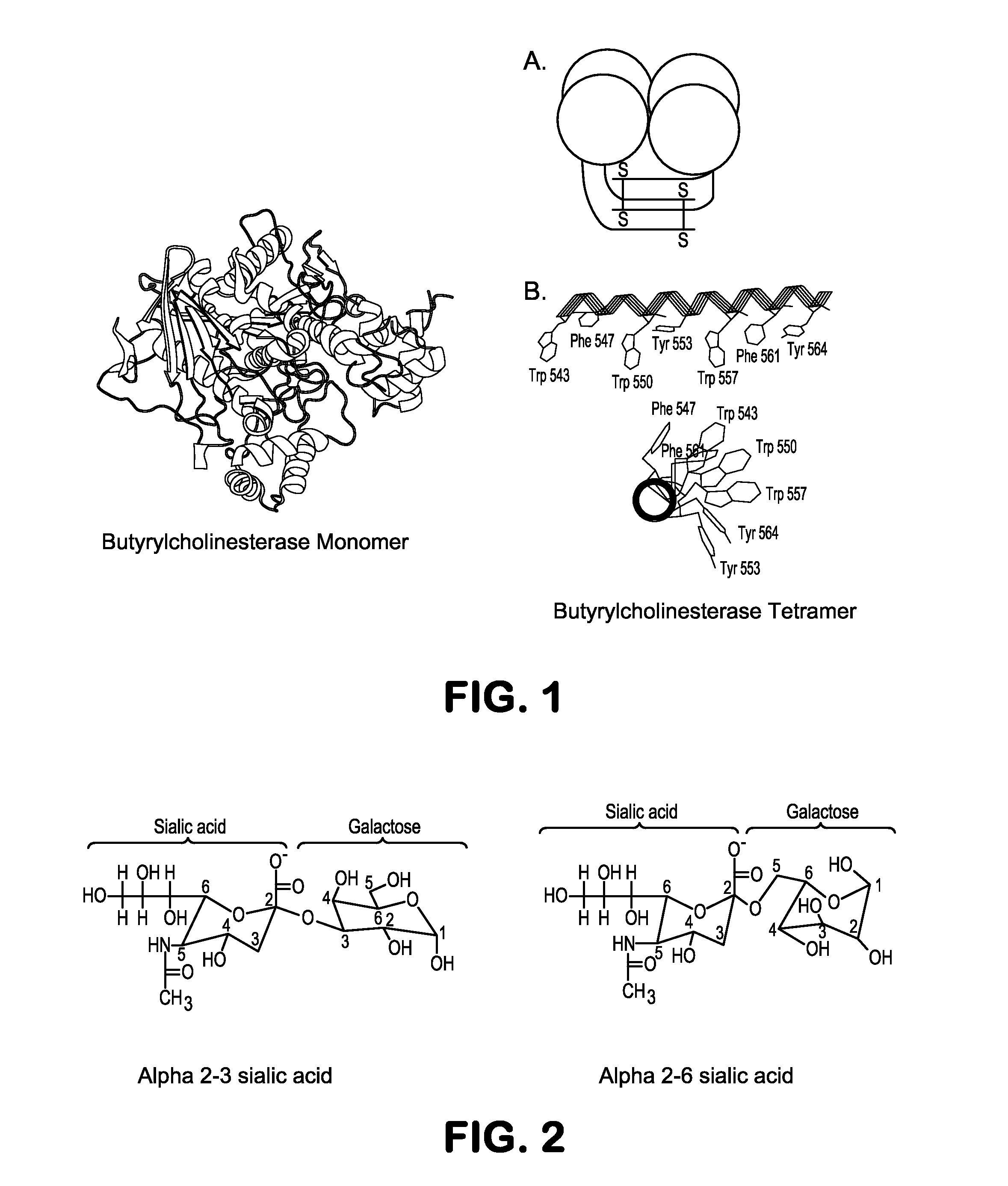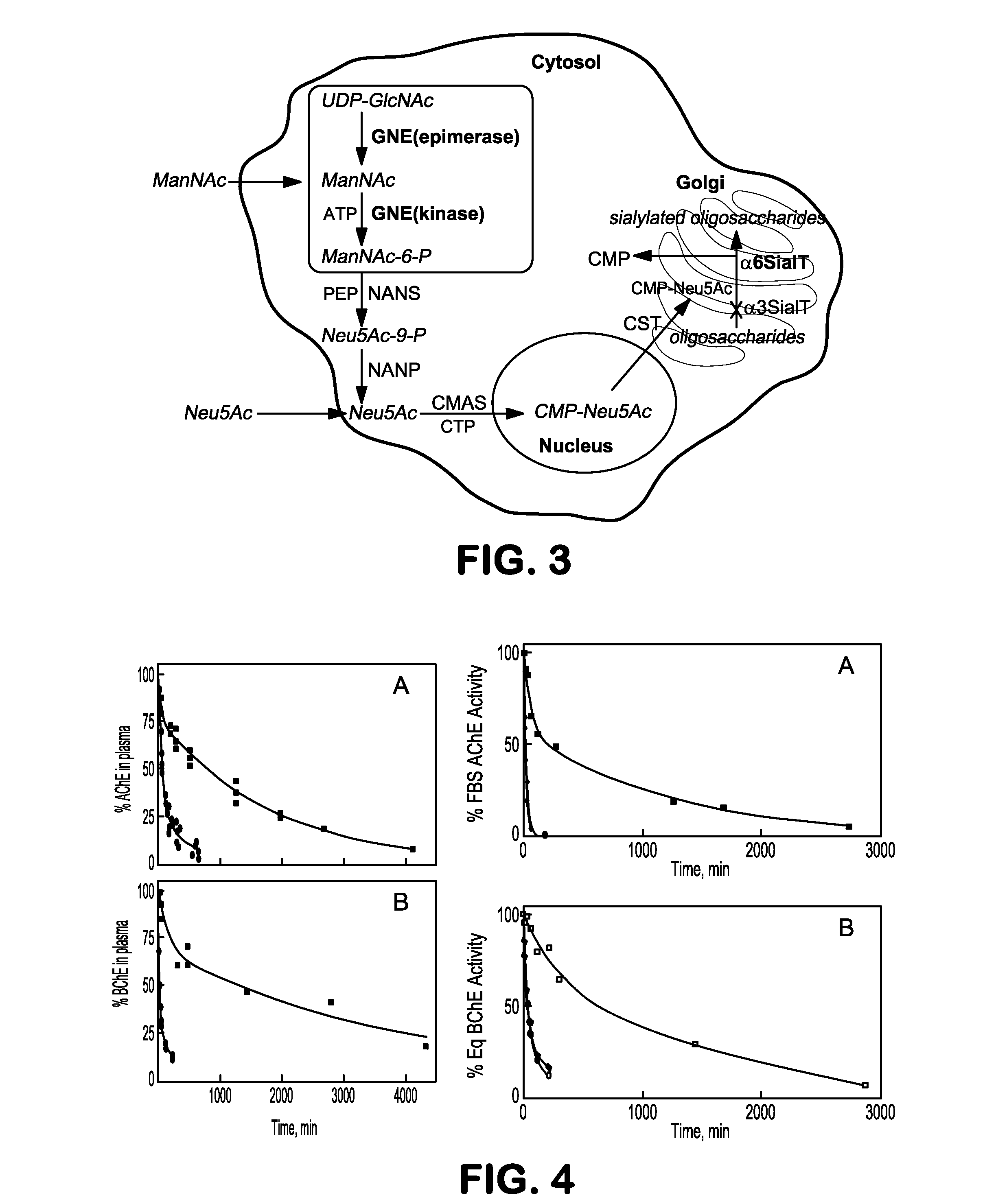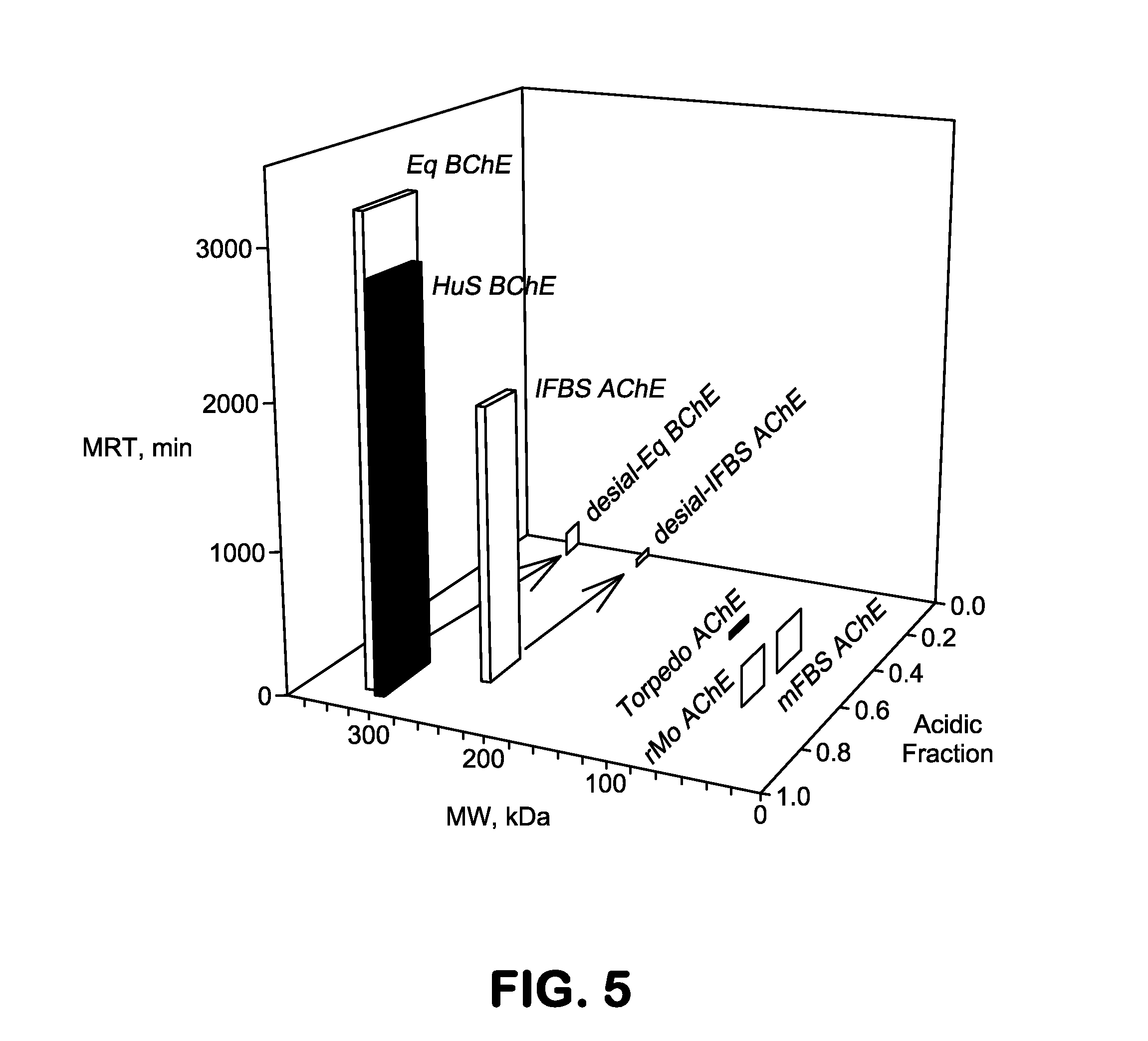Method of production of recombinant glycoproteins with increased circulatory half-life in mammalian cells
- Summary
- Abstract
- Description
- Claims
- Application Information
AI Technical Summary
Benefits of technology
Problems solved by technology
Method used
Image
Examples
example 1
Expression of Recombinant Human BChE (huBChE) In CHO
[0070]The gene for human butyricholinesterase (huBChE) will be obtained from a commercial DNA human liver library or other researchers from previous research. As needed, BChE cDNA can be cloned from total liver mRNA. For expression of huBChE in CHO cells, the full length BChE cDNA will be inserted into the pcDNA mammalian expression vector, which also contains a neomycin resistance gene (phuBChE-neo). CHO-K1 cells will be obtained from ATCC and grown up in standard DMEM medium. Then the CHO-K1 cells will be transfected with the phuBChE-neo plasmid using lipofectamine and high level expression clones of huBCHE will be selected using increasing concentrations of G-418. The highest expressing clones will be identified using anti-huBChE antibodies in ELISA assays. From this multiple adherent stable CHO-K1 cell lines expressing monomeric rhuBChE (CHO-rhuBChE) will be obtained.
example 2
Engineering Recombinant Human Alpha2-6 Sialyltransferase Gene In CHO
[0071]This example illustrates recombinant expression systems that increase alpha2-6 sialic acid content in glycoproteins by engineering genes for generating alpha2-6 ialyltransferase in CHO.
[0072]The first step will be to express the gene for alpha2-6sialyltransferase (ST6GAL1; Pubmed Gene ID: 6480) in CHO-rhuBChE. The gene for human ST6GAL1 will be obtained from a commercial cDNA library. As an alternative, ST6GAL1 cDNA can be cloned from total UNA isolate using reverse transcriptase and human ST6GAL1 gene specific PCR primers. The full length cDNA will be inserted into the pcDNA mammalian expression vector, which also contains a zeocin resistance gene (pST6GAL1-zeocin). Then CHO-rhuBChE cells will be transfected with the pST6GAL1-zeo plasmid using lipofectamin 2000 (Invitrogen) and clonal isolates selected in selection medium containing zeocin antibiotic. This process will afford CHO-rhuBChE-ST6GAL1 clones co-exp...
example 3
Inhibition of Alpha2-3 Sialyltransferase
[0073]This example illustrates recombinant expression systems that decrease the alpha2-3 sialic acid content in glycoproteins by knockdown or knockout of the alpha2-3sialyltransferase gene.
[0074]Sialic acids attached alpha2-3 to recombinant BChE are suspected to be less likely to remain in circulation and more susceptible to sialidases (neuraminidases in the body than alpha2-6 sialic acids. In order to test this hypothesis, the circulatory half-life and structures for cells that a) express alpha2-3 sialic acid (CHO-RhuBChE) b) express both alpha2-3 and alpha2-6 sialic acid (CHO-rhuBChE-ST6GAL1) and c) those that express predominantly alpha2-6 sialic acid attachments (CHO-rhuBChE-ST6GAL1-ST3GAL(−) will be compared. In order to create this third variant, the endogenous Chinese Hamster Ovary (CHO) alpha2-3sialyltransferase gene (St3gal1) will be reduced using siRNA technologies. To select an siRNA sequence to knock down St3gal1 gene, the mRNA seq...
PUM
| Property | Measurement | Unit |
|---|---|---|
| Length | aaaaa | aaaaa |
| Nucleic acid sequence | aaaaa | aaaaa |
| Content | aaaaa | aaaaa |
Abstract
Description
Claims
Application Information
 Login to View More
Login to View More - R&D
- Intellectual Property
- Life Sciences
- Materials
- Tech Scout
- Unparalleled Data Quality
- Higher Quality Content
- 60% Fewer Hallucinations
Browse by: Latest US Patents, China's latest patents, Technical Efficacy Thesaurus, Application Domain, Technology Topic, Popular Technical Reports.
© 2025 PatSnap. All rights reserved.Legal|Privacy policy|Modern Slavery Act Transparency Statement|Sitemap|About US| Contact US: help@patsnap.com



